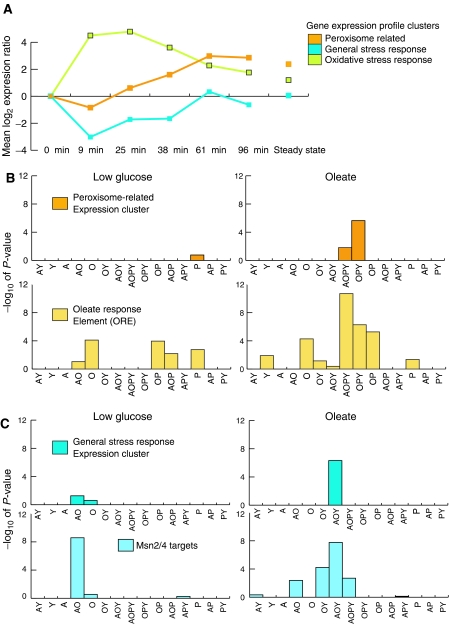Figure 2.
Network topology reflects target gene expression profile and function. (A) Oleate-responsive genes cluster into five groups based on their expression profiles (Koerkamp et al, 2002). The mean profiles of three gene clusters relevant to the regulatory network are shown and are annotated with biological processes associated with them. (B, C) Statistical analysis of the network distribution of the peroxisome-related (B) and the general stress response (C) expression profile clusters. Network topology clusters with an overrepresentation of peroxisome-related genes and general stress response genes have dark orange and dark blue bars, respectively. The height of each bar reflects the significance of the enrichment. In the presence of oleate, topology cluster AOY (genes targeted by Adr1p, Oaf1p and Oaf3p) is significantly enriched for the expression cluster representing general stress response genes (P-value∼5 × 10−7), whereas topology cluster OPY (genes targeted by Oaf1p, Pip2p and Oaf3p) is enriched for expression cluster representing peroxisome-related genes (P-value∼2 × 10−6). For both expression clusters, significance scores are lower and targeting is less cooperative in the glucose network. Statistical analyses of the distributions of OREs and Msn2p/Msn4p binding sites in the networks are also shown. These data are similar to those of the peroxisome-related and general stress response genes, respectively.

